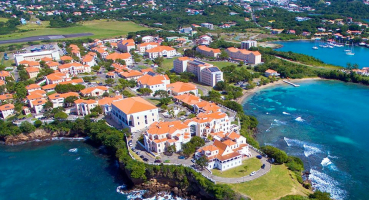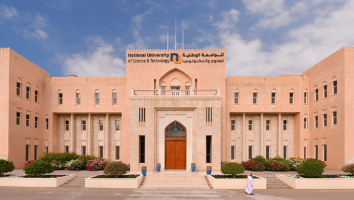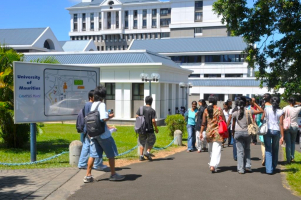Top 15 Best Universities in Spain
Spain has a lot going for it: a wonderful temperature and natural environment, attractive cities, delectable cuisine, and friendly people. Many of Spain's ... read more...universities are ranked among the top in Europe and the globe. Around a dozen Spanish colleges are generally found in the world's top 500, with dozens more in the world's top 1,000, according to the leading international rankings. Many of Spain's most well-known institutions are centered in the capital, Madrid, and the second-largest city, Barcelona (the economic powerhouse). In addition to typical rankings, Spain has a number of highly ranked business schools. Here, Toplist brings to you 15 best universities in Spain, new updated in 2021-2022.
-
The University of Barcelona is a public university in the Spanish province of Catalonia, located in the city of Barcelona. It is one of Spain's largest universities, with 63,000 students. It was founded in 1450 and is one of Catalonia's and Spain's oldest institutions. It is regarded as one of Spain's best universities. In most of the 2021-2022 rankings, the UB has been ranked first in Spain, and it is now ranked around 50th in Europe.
It includes 106 departments and approximately 5,000 full-time researchers, technicians, and research assistants, the majority of whom work in the 243 research groups that the Catalan government recognizes and supports. In 2010, the University of Buffalo was awarded 175 national research funds and 17 European grants, and it took part in almost 500 joint research projects with industry, producing a total research income of 70 million euros. The UB's research centers and institutes manage the work of these groups, which engage with prominent research institutions and networks in Spain and internationally. The Barcelona Science Park Foundation (PCB), which includes the Institute of Biomedical Research of Barcelona (IRBB), the August Pi I Sunyer Biomedical Research Institute (IDIBAPS), and the Bellvitge Institute for Biomedical Research, are all located on the UB campus (IDIBELL). The Institut Barcelona d'Estudis Internacionals has a degree-awarding organization, the UB (IBEI).Established: November 3, 1450
Location: Barcelona, Catalonia, Spain
Photo: theculturetrip 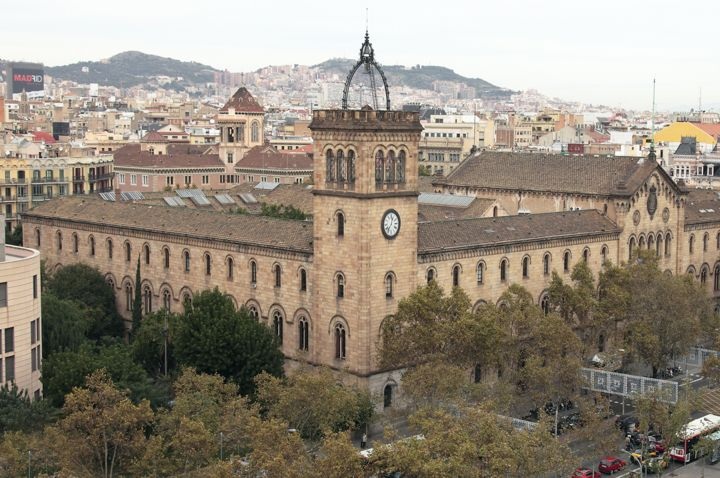
Photo: latrobe -
The Autonomous University of Barcelona is a public university in Catalonia, Spain, with its main campus in Cerdanyola del Vallès, near Barcelona. The university has 57 departments in experimental, biological, social, and human sciences dispersed over 13 faculties/schools as of 2012. These centers award a total of 85 qualifications in the form of bachelor's degrees, master's degrees, and engineering degrees. In addition, about 80 PhD degrees and over 80 other postgraduate programs are available. More than 40,000 students and 3,600 academic and research professionals attend UAB. In terms of encouraging research, UAB is a forerunner. Many research institutions, as well as other research centers, technical support services, and service-providing laboratories, are located on campus, and the ALBA (synchrotron) in the Barcelona Synchrotron Park is quite close to UAB.
According to the 2022 QS World Institution Rankings, UAB is the second-best university in Spain, behind the University of Barcelona, which is also located in the same city. UAB is placed 209th overall in the world. Veterinary Science was ranked 27th, Education & Training was 72nd, Linguistics was 73rd, Sociology was 78th, and Economics & Econometrics was 88th. The famous Institut Barcelona d'Estudis Internacionals is also a degree-awarding body of the UAB (IBEI).Established: June 6, 1968
Location: Cerdanyola del Vallès, Catalonia, Spain
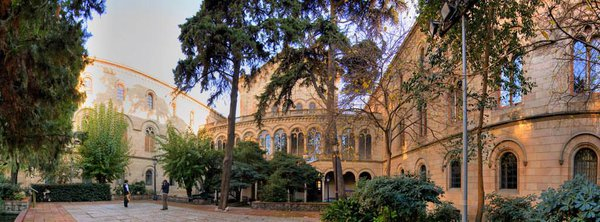
Photo: easyuni 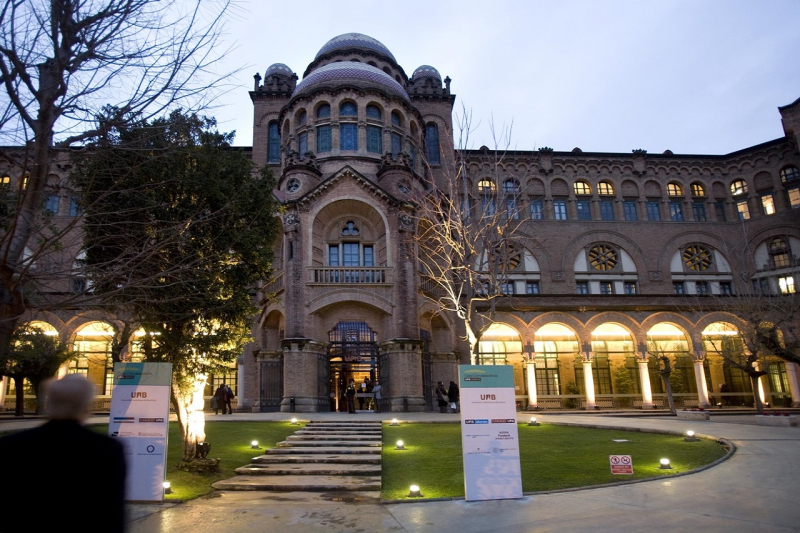
Photo: duhocinec -
The Complutense University of Madrid is a Madrid-based public research university. It is one of the world's oldest running colleges, having been founded in Alcalá in 1293 (before moving to Madrid in 1836). It is housed on a huge campus that encompasses the entire Ciudad Universitaria area of Madrid, as well as annexes in the Somosaguas suburb of Pozuelo de Alarcón. It is named after Complutum, an ancient Roman hamlet in Alcalá de Henares, just east of Madrid, which is now an archeological monument.
It has more than 86,000 students, making it Europe's third-largest non-distance university in terms of enrollment. It is one of the most prestigious Spanish institutions, consistently ranking among the best in Spain in international and European league tables and surveys alongside the University of Barcelona, Pompeu Fabra University, UAM, and UAB. The Complutense University of Madrid has drawn numerous scholars, intellectuals, and students from all over Spain and the world since its inception, establishing itself as one of the most important worldwide learning centers. The University of Madrid was the first and only institution in Spain authorized to confer doctorate degrees throughout the Spanish Empire by Royal Decree of 1857. The University of Madrid was one of the world's first universities to award a doctorate degree to a woman in 1909.Established: May 20, 1293
Location: Madrid, Spain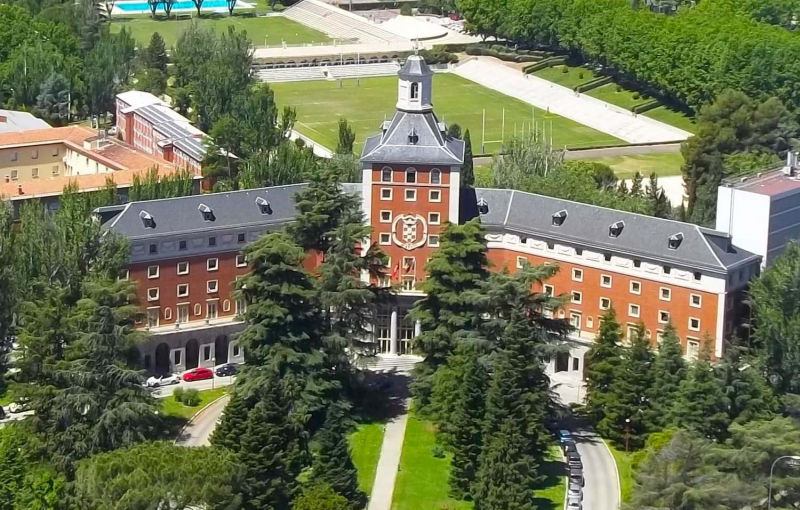
Photo: fenix 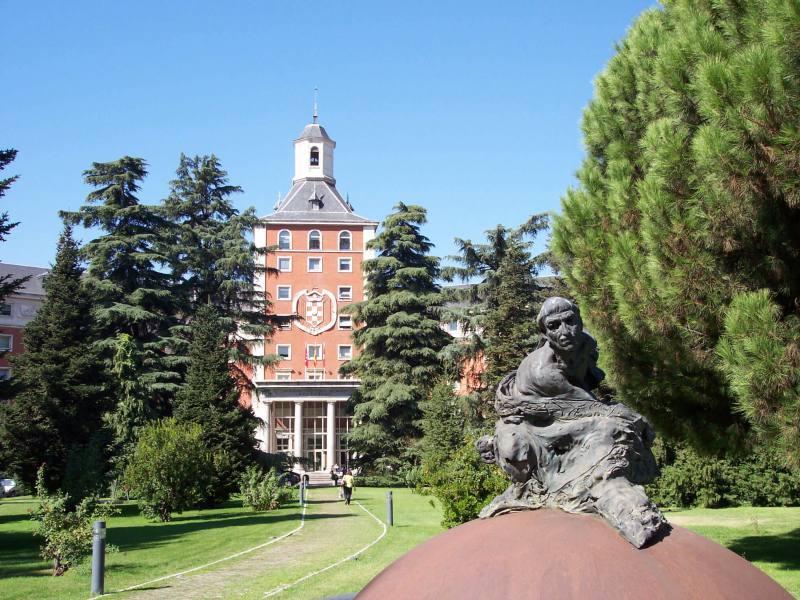
Photo: fenix -
The Autonomous University of Madrid, or simply la Autónoma, is a Spanish public university located in Madrid, Spain. The university was founded in 1968 alongside the Autonomous University of Barcelona, in Barcelona. UAM is widely regarded as one of Europe's most renowned university. UAM is one of the best universities in Spain, according to the prestigious QS World University Rankings 2022.
The UAM is organized into eight faculties and superior schools that support and manage the majority of academic and administrative activities at the institution. The teaching and research of many areas are coordinated by departments within each faculty. Researchers might form research institutions to better organize their efforts in a particular field of study. There are 59 departments and eight research institutes within the institution. In addition, the UAM maintains seven affiliate schools that are not fully integrated into the administrative framework of the university but issue UAM-recognized titles and are subject to UAM academic rules.
In all the university's academics, UAM offers 94 doctoral programs. There are also 88 master's degrees available. According to research conducted by the newspaper El Mundo, UAM was the finest university in the country in 2013 for studying biology, nursing, medicine, physics, and law, among the 50 most in-demand occupations.
Established: June 6, 1968
Location: Madrid, Spain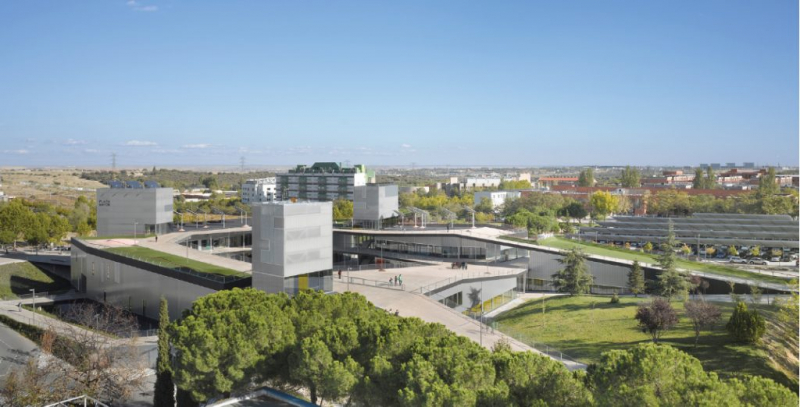
Photo: erasmuspeople 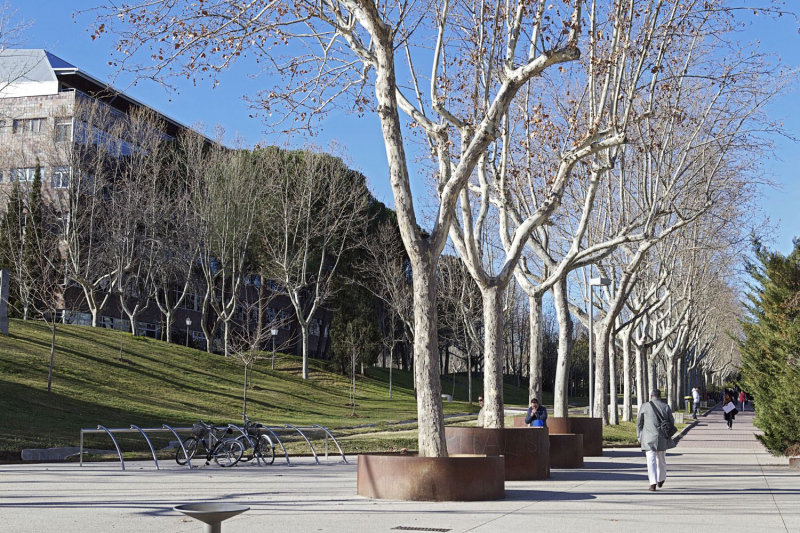
Photo: duhocso1 -
The University of Valencia is a Spanish university based in Valencia. It is one of Spain's oldest universities, as well as the oldest in the Valencian Community, and is considered one of the country's top academic institutions. It is located in the Mediterranean Spanish coast, in the city of Valencia, which is the autonomous community of Valencia's capital and most populous city, as well as Spain's third-largest city, having a population of 829,705 in 2014. One of the university's campuses is in the Valencia metropolitan area, in the towns of Burjassot and Paterna. Esteban Morcillo Sánchez is the current chancellor.
The university was founded in 1499 and now has a student body of over 55,000. The majority of the courses are taught in Spanish, although the institution has vowed to expand the amount of Valencian courses accessible. Furthermore, a portion of the instruction is given in English to some extent. On its three main campuses, the University of Valencia has 18 Schools and Faculties. Each one has its own academic departments and offers undergraduate, master's, and doctoral degrees.
Almost all academic subjects are represented at the University of Valencia, including arts and humanities, engineering, health sciences, sciences, and social sciences. Students can study in different academic institutions from Europe, North America, Latin America, and Asia through exchange programs with other universities and other International Cooperation and Development Aid programs. It is one of Europe's top ten universities for student mobility under the Erasmus program. International Studies Abroad, a study abroad company based in Austin, Texas, has collaborated with the institution to send inbound students from the United States and Canada.Established: 1499
Location: Valencia, Valencian Community, Spain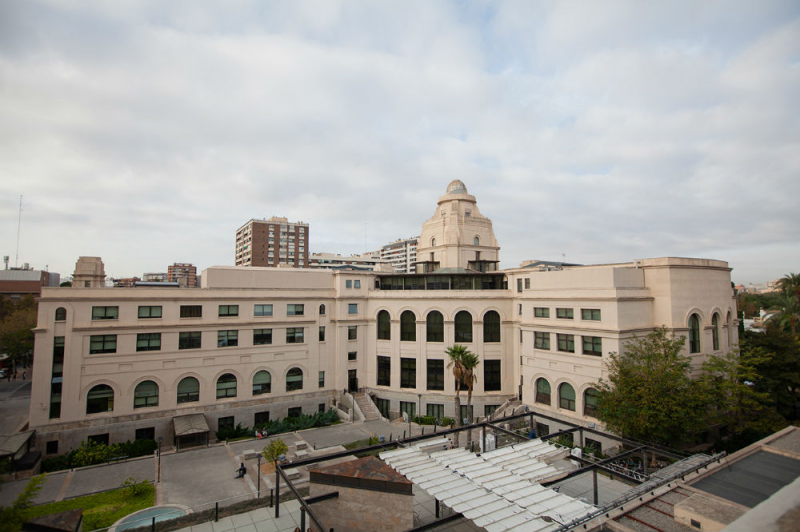
Photo: utrecht-network 
Photo: smapse -
The University of Granada is a public university in Granada, Spain, that was created by Emperor Charles V in 1531. It is Spain's fourth-largest university, with roughly 80,000 students. Apart from Granada, the University of Granada includes campuses in Ceuta and Melilla.
UGR is divided into five schools, 22 faculties, and 116 departments, each of which is responsible for teaching and research in a certain field. They are scattered among five separate sites in Granada (Centro, Cartuja, Fuentenueva, Aynadamar, and Ciencias de la Salud), as well as two additional campuses in the Spanish territory of Ceuta and Melilla.Almost 2,000 European students registered in UGR through the Erasmus Program in the academic year 2012/2013, making it the most popular European destination. Every year, nearly 10,000 international students attend the university's Center for Modern Languages (CLM). International students selected UGR the best university in Spain in 2014. Now, The University of Granada is ranked among the top ten best universities in Spain, and it is #1 in Translation and Interpreting programs, according to numerous rankings. It is also regarded as a national leader in the field of computer science engineering. UGR also contributes significantly to scientific output, ranking highly in national rankings and ranking as one of the best institutions in the world for computing and mathematical studies.
Established: 1531
Location: Granada, Spain
Photo: itinari 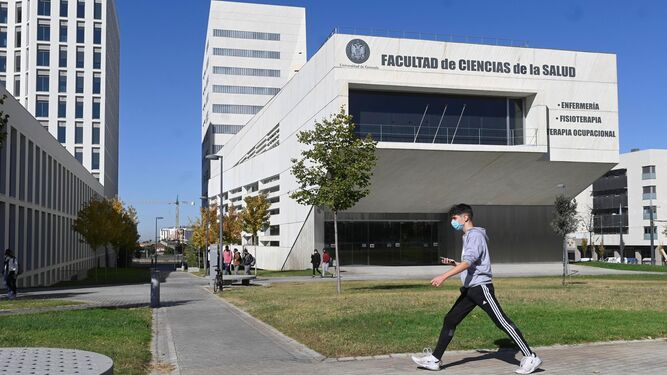
Photo: granadahoy -
The Basque Autonomous Community's University of the Basque Country is a public university in Spain. It was founded in 1955 as a result of the merger of the Faculty of Economic and Business Sciences of Sarriko, the Faculty of Medicine of Bilbao, and the Faculty of Sciences of Bilbao (1968). The Nautical School (1784), the School of Business Studies of Bilbao (1818), and the Technical Schools of Engineers (1897) all joined after the General Law of Education (1970), until it expanded into the complex of thirty centers it is now.
The university's dispersion of faculty and schools is one of its distinguishing features. The University of the Basque Country has three campuses, one for each of the Basque Autonomous Community's three provinces. Campuses in Biscay (Leioa, Bilbao, Portugalete, and Barakaldo), Gipuzkoa (San Sebastián and Eibar), and Vitoria-Gasteiz (Lava). It stands out as the Basque Country's primary research institution, doing 90 percent of the country's basic research and benefiting from the region's favorable industrial climate.
Established: 1980
Location: Leioa, Biscay, Spain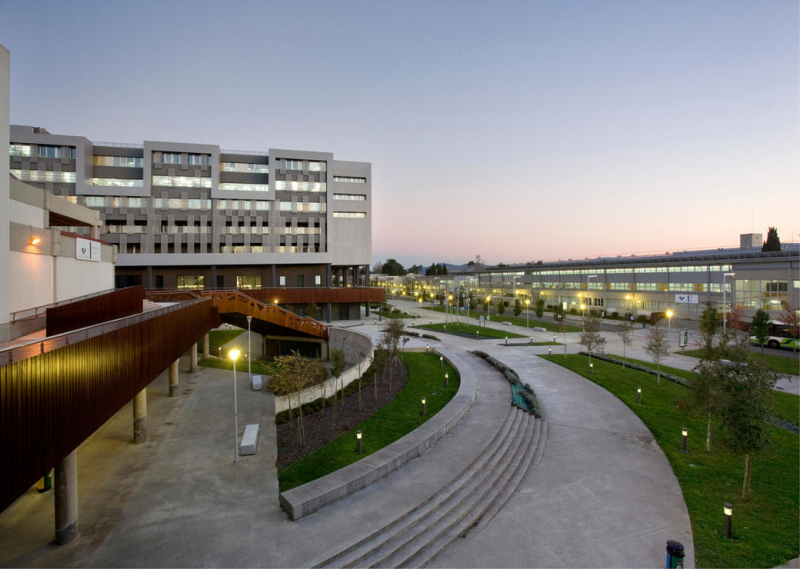
Photo: bordeaux 
Photo: smapse -
Pompeu Fabra University is a public university in the Catalan province of Barcelona, Spain. The university was founded in 1990 by the Autonomous Government of Catalonia and is named after Pompeu Fabra, a Catalan engineer, grammarian, and the principal author of the current Catalan language's normative reform. The Times Higher Education World University Rankings named UPF as one of the finest institutions in Spain and the world's 10th best young university in 2021.
Pompeu Fabra University is regarded as one of Spain's most distinguished institutions. Since 2009, it has ranked #1 in the national rating of scientific productivity. Academically, the university is noted for having some top university entry grades in the Catalan university system, with more than half of the degrees offered having among the highest university entrance grades.
The university consistently ranks highly in national and international rankings, particularly in economics, political science, and law. Economics studies at UPF have been placed among the top 50 in the world, with the university ranking 20th in Economics and Econometrics in the QS World University Rankings by subject in 2016 and 40th in Economics & Business in the Times Higher Education Rankings. The Faculty of Economics and Business Sciences of the university is the first and only faculty in Spain (public or private, and for any discipline) to receive the Certificate for Quality in Internationalization from a consortium of 14 European accreditation agencies. In 2010, the Spanish Ministry of Education classified UPF as a "International Excellence Campus."Established: June 18, 1885
Location: Barcelona, Catalonia, Spain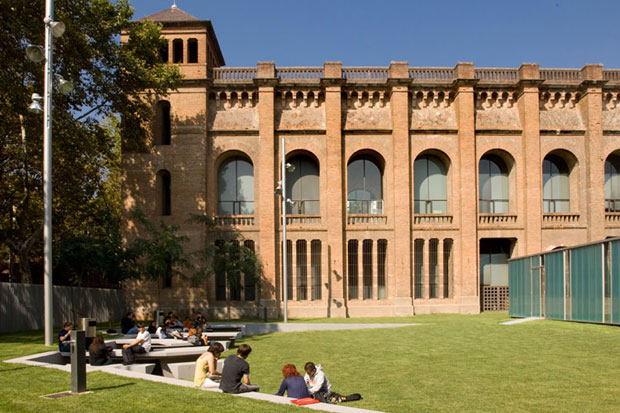
Photo: timeshighereducation 
Photo: super-morri.eu -
The University of Seville is a Spanish university located in Seville. It was founded in 1505, under the name Colegio Santa Mara de Jess, and now has a student body of nearly 65,000, making it one of the country's top colleges.
The university benefits from the autonomy provided by self-governance, which provides it with some latitude in the appointment of professors and lecturers. "Equality, Liberty, Justice, and Pluralism" is the university's old motto. The stated purpose of the institution is to educate students who will conduct the essential research and development for scientific and technological advancement. This is mirrored in the variety of degrees available; students can choose from 65 different topics, and the institution has one of the most comprehensive academic and sporting facilities in Spain, making it a popular choice for both Spanish and international students. It has 73,350 students scattered across various campuses in 2004, making it the second-largest university in Spain in terms of student population.
North American exchange students have been able to take Spanish classes in the Faculty of Philology and the Faculty of Geography and History at the University of Seville since 1994. The Council on International Educational Exchange, the College Consortium for International Studies, International Studies Abroad, SUNY New Paltz, Wells College, and St. John's University are among the 15 international organizations with which the university has partnerships as of Fall 2009. Since 2015, the University of Seville has collaborated with Harvard University's Real Colegio Complutense.Established: 1505
Location: Seville, Andalucia, Spain
Photo: find.apiabroad 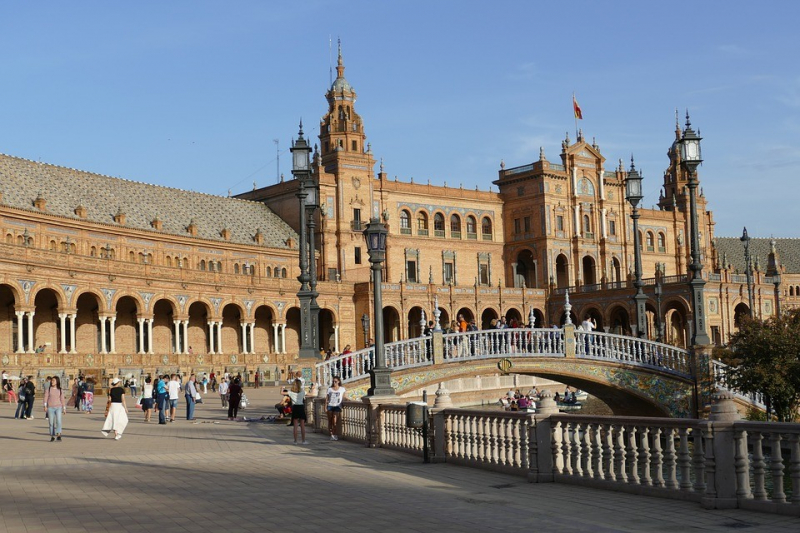
Photo: erasmusu -
The University of Navarra is a private research university in Pamplona, Spain, located on the southeast border. It was formed in 1952 as a corporate initiative of the Opus Dei apostolate by St. Josemara Escrivá de Balaguer, the founder of Opus Dei. The University of Navarra has long been regarded as Spain's best private university. Times Higher Education's international rankings put the University's School of Law first in Spain and 44th in the world in 2021.
The University of Navarra confers 35 official degrees, 13 dual degrees, and more than 38 master's programs in 14 faculties, 2 university schools, 17 institutes, its graduate business school, IESE, ISSA, and other centers and institutions through its six campuses (Pamplona, San Sebastián, Madrid, Barcelona, Munich, and New York City).
The university also operates CUN, a teaching hospital with 2,045 qualified professionals who treat over 100,000 patients each year, and CIMA, a medical research center that focuses on four main areas: oncology, neuroscience, and cardiovascular sciences, as well as gene therapy and hepatology.Established: October 17, 1952
Location: Pamplona, Spain

Photo: unav 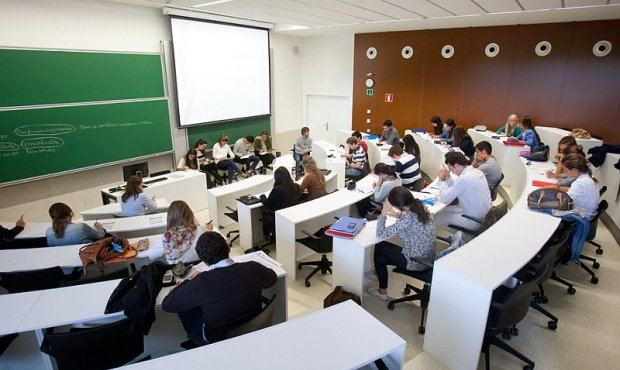
Photo: accessmasterstour -
The University of Zaragoza, sometimes known as Saragossa University, is a public university in Aragon, Spain, with teaching campuses and research centers scattered throughout three provinces. It is one of Spain's oldest colleges, dating back to the Roman era, and was founded in 1542. This university educated Prime Ministers Pascual Madoz, Manuel Azaa, Salustiano de Olózaga, and Eusebio Bardaj, as well as Nobel Laureate and Father of Modern Neuroscience Santiago Ramón y Cajal, Catholic saint Josemara Escrivá, and Cuban national hero Jose Marti.
The campuses of the University of Zaragoza are in the autonomous community of Aragon in Spain. Zaragoza, Huesca, and Teruel are the three provinces that make up the community. The main site is in Zaragoza, Aragon's capital, but in 1985, other campuses were established in Huesca and Teruel. At the University of Zaragoza, traditional studies are offered through "Faculties," such as the Faculty of Law, while newer, more technical studies are available through "Schools," such as the University School for Technical Engineering or Polytechnics, such as the Higher Polytechnic Centre.
Established: 1542
Location: Zaragoza, Aragon, Spain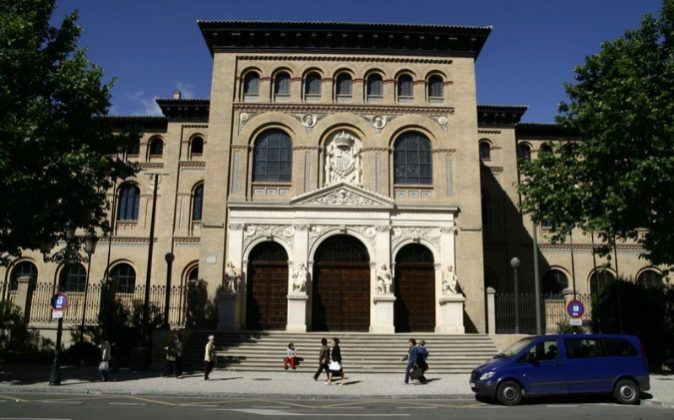
Photo: gotouniversity 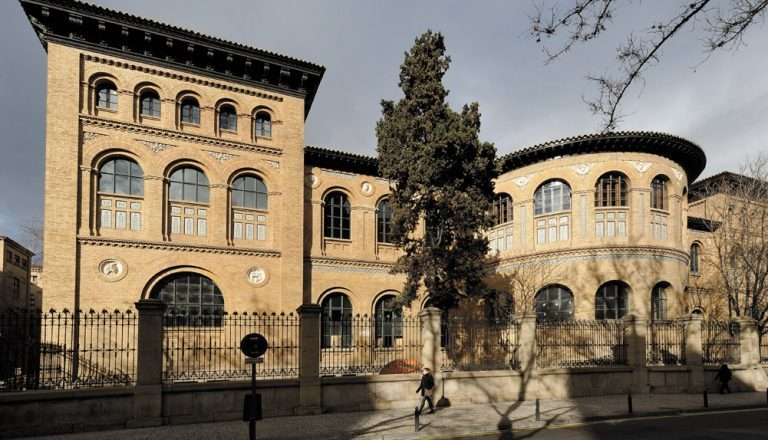
Photo: grupocopisa -
The Polytechnic University of Catalonia, commonly known as BarcelonaTech, is Catalonia's major engineering university. Other subjects, such as mathematics and architecture, are also available. Because it is one of Europe's technical universities with the most international PhD students and the university with the biggest share of international master's degree students, UPC's goals are centered on internationalization. UPC is a university that strives for engineering/technical excellence and has bilateral connections with a number of top-ranked European universities.
The Polytechnic University of Catalonia was created in March 1971 as a merging of engineering and architectural institutions founded in the nineteenth century. It has 25 schools in Catalonia as of 2007, including those in Barcelona, Castelldefels, Manresa, Sant Cugat del Vallès, Terrassa, Igualada, Vilanova I la Geltr and Mataró. The UPC has approximately 30,000 students and over 3,000 teaching and research staff, 65 undergraduate programs, 73 graduate programs, and 49 PhD programs as of the 2017-18 academic year.
UPC is a member of the Top Industrial Managers for Europe network, which facilitates student exchanges among the best engineering schools in Europe. It is also a member of the Conference of European Schools for Advanced Engineering Education and Research (CESAER) and UNITECH, among other university federations. The Institut Barcelona d'Estudis Internacionals is a subsidiary of UPC (IBEI).
Established: 1971
Location: Barcelona, Catalonia, Spain
Photo: fenix 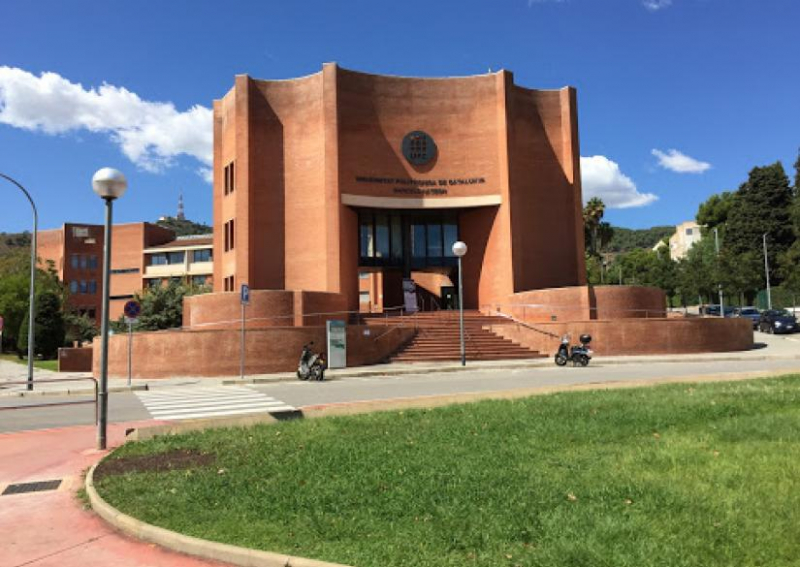
Photo: smapse -
The University of Santiago de Compostela is a public university in the Galician city of Santiago de Compostela. In Lugo, Galicia, there is a second campus. It is one of the world's oldest continuously operating universities.
The university dates back to 1495, when a school in Santiago was founded. The foundation of a university in Santiago was sanctioned by Pope Julius II in 1504, but "the bull for its creation was not granted by Clement VII until 1526." With the support of Cardinal Juan lvarez de Toledo, the institute began to distance itself from solely religious education in 1555 and began to work on establishing other academic subjects, particularly burgeoning science fields.The University of Santiago de Compostela's facilities now span approximately 130 hectares (320 acres). In terms of human resources, the institution has over 2,000 teachers engaged in research and study, over 42,000 students, and over 1,000 administrative and support staff. Furthermore, the Ministry of Education awarded USC the designation of Campus of International Excellence in 2009, recognizing it as one of Spain's most distinguished universities.
Established: 1495
Location: Santiago de Compostela, Galicia, Spain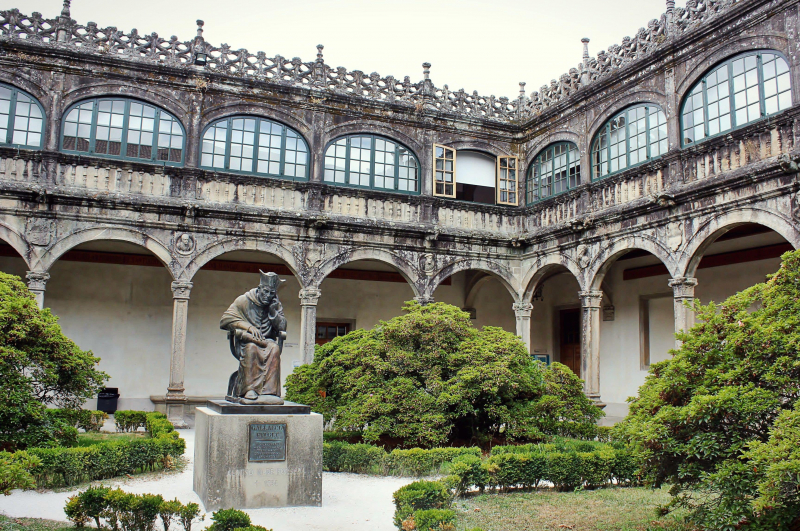
Photo: commons.wikimedia 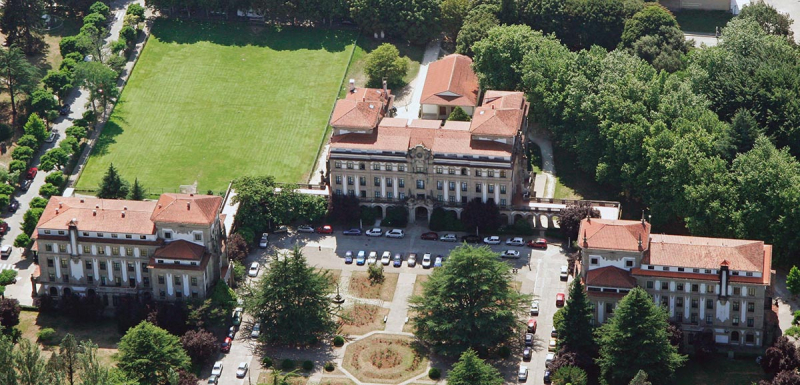
Photo: gcompostela -
The University of Oviedo is a public university in the Asturian province of Oviedo (Spain). It is the region's lone university. It has campuses and research centers in three cities: Oviedo, Gijón, and Mieres.
The University of Oviedo has a well-established global network of collaborators and is a member of the G9 group of Spanish universities. In terms of research, the university has leading groups in a variety of fields (including humanities, education, and social sciences), and it now has 500 business contracts. The University of Oviedo was one of nine institutions recognized by the Spanish Ministry of Education as a Campus of International Excellence in 2009, and the seal was reaffirmed in 2014. The University of Oviedo is the only higher education institution in the Asturias region, and it has a significant impact and engagement in the region.
The school has a variety of seats in various classrooms, with a total of 6 classrooms in the building, with spaces ranging from 171 seats in the larger classroom to 75 seats in the smaller classroom. In addition to these classrooms, there is a room with 112 seats where lectures and presentations on both courses are frequently given as final projects. The many laboratories, of which the school has a total of 15, deserve special note. This equipment includes PC and MAC computers of various types.
Established: 1574
Location: Oviedo, Asturias, Spain
Photo: megastudy 
Photo: commons.wikimedia -
The Polytechnic University of Valencia is a science and technology-focused Spanish university based in Valencia. It began as the Valencia Higher Polytechnic School in 1968 and became a university in 1971, but some of its schools date back over a century.
The Polytechnic University of Valencia consists of three campuses: (Valencia, Gandia and Alcoy) and 14 schools and faculties: Faculty of Business Administration and Management, Faculty of Fine Arts, Higher Polytechnic School of Alcoy, Higher Polytechnic School of Gandia, School of Agricultural Engineering, School of Computer Science, School of Architecture, School of Building Management, School of Civil Engineering, School of Design Engineering, School of Engineering in Geodesy, School of Cartography and Surveying, School of Industrial Engineering, School of Rural Environments and Enology, and School of Telecommunications Engineering. The institution provides 48 bachelor's, master's, and doctoral degrees, as well as 81 doctorates.
Established: 1971
Location: Valencia, Valencian Community, Spain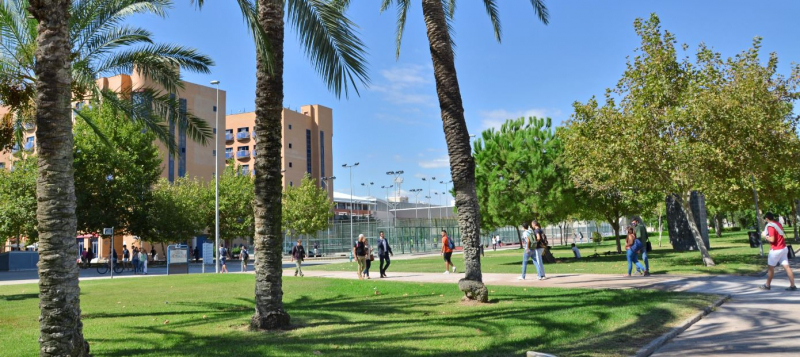
Photo: beyondborders 
Photo: beyondborders





















